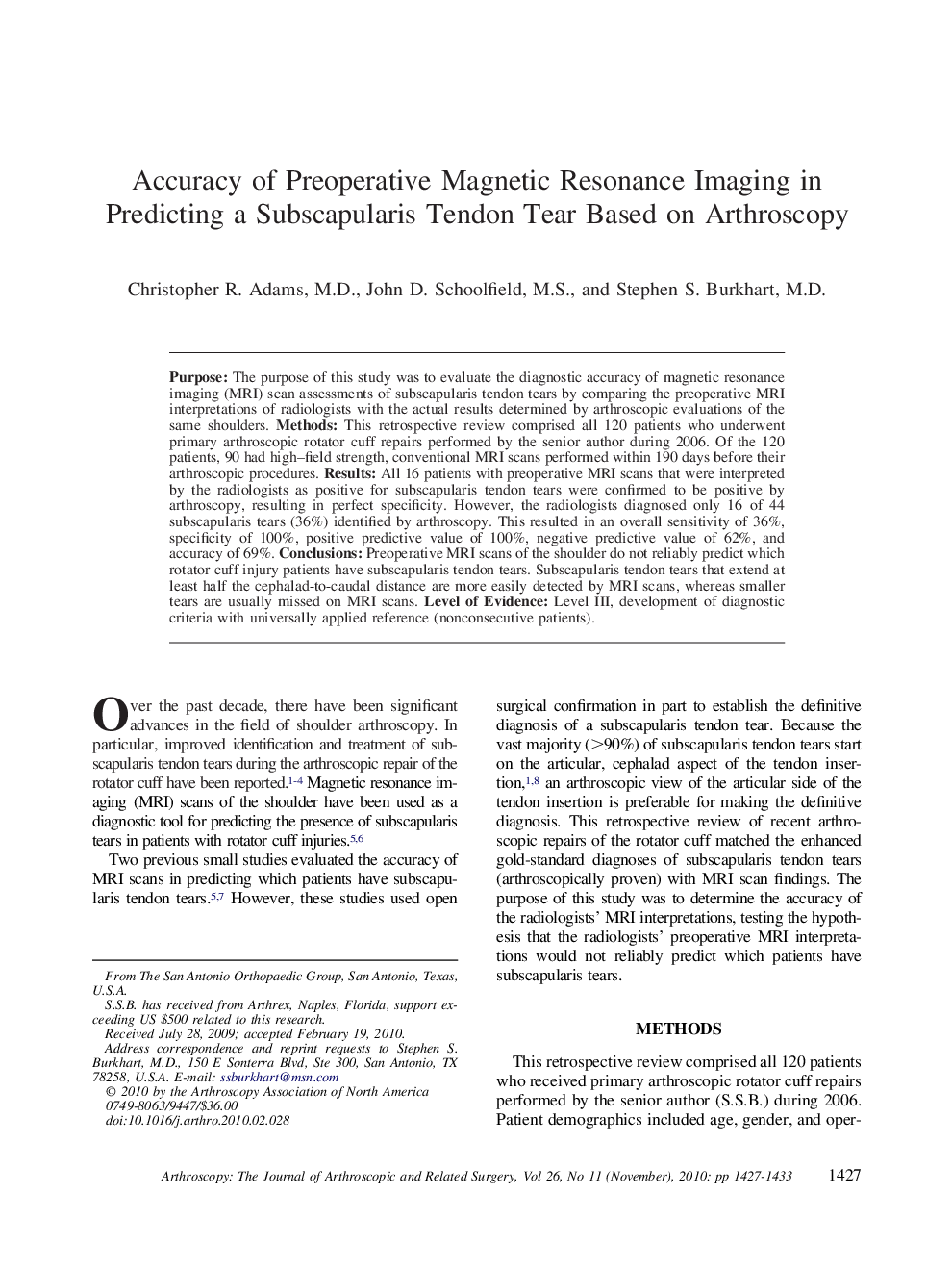| Article ID | Journal | Published Year | Pages | File Type |
|---|---|---|---|---|
| 4045047 | Arthroscopy: The Journal of Arthroscopic & Related Surgery | 2010 | 7 Pages |
PurposeThe purpose of this study was to evaluate the diagnostic accuracy of magnetic resonance imaging (MRI) scan assessments of subscapularis tendon tears by comparing the preoperative MRI interpretations of radiologists with the actual results determined by arthroscopic evaluations of the same shoulders.MethodsThis retrospective review comprised all 120 patients who underwent primary arthroscopic rotator cuff repairs performed by the senior author during 2006. Of the 120 patients, 90 had high–field strength, conventional MRI scans performed within 190 days before their arthroscopic procedures.ResultsAll 16 patients with preoperative MRI scans that were interpreted by the radiologists as positive for subscapularis tendon tears were confirmed to be positive by arthroscopy, resulting in perfect specificity. However, the radiologists diagnosed only 16 of 44 subscapularis tears (36%) identified by arthroscopy. This resulted in an overall sensitivity of 36%, specificity of 100%, positive predictive value of 100%, negative predictive value of 62%, and accuracy of 69%.ConclusionsPreoperative MRI scans of the shoulder do not reliably predict which rotator cuff injury patients have subscapularis tendon tears. Subscapularis tendon tears that extend at least half the cephalad-to-caudal distance are more easily detected by MRI scans, whereas smaller tears are usually missed on MRI scans.Level of EvidenceLevel III, development of diagnostic criteria with universally applied reference (nonconsecutive patients).
